Halloween, that time of year when the days are short, the leaves are orange, and the kids are excited. A time when we celebrate fear and the macabre rather than run from it. Children make their costumes for trick-or-treating. Zealous residents adorn their houses with ghoulish decorations that would make neighbors call the police any other time of year. And the TV stations flood the airwaves with films about ghosts.
Halloween is steeped with tradition, and I could go into the history itself. But I’m going to talk about a more “modern” (term used loosely) custom that comes associated with the day. When you thing of a monster movie or monster story, you probably think of one of two things: either a giant monster, or humanoid monster. Both kinds have had their fair share of fan favorites over the years, and rightfully so. Godzilla, King Kong, and more recently Cloverfield have decimated our cities, while zombies and vampires (not the sparkly kind) have chilled our bones.
In honor of Halloween, I’d like to talk about arguably the most famous spook story in the latter category. One that has been passed on for almost two centuries, and is till one of the most recognizable horror icons. The story of Frankenstein.
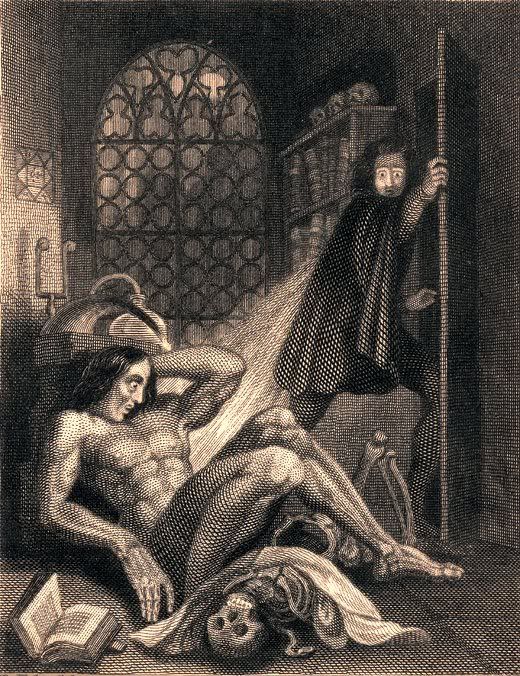
In the early 19th century, the world wasn’t having a very good summer. Strange weather patterns caused by a volcano or something had robbed people of the opportunity to go swimming and have bonfires and do all that other summery stuff (whatever summery stuff they did in 1816). During this time, young Mary Shelley was visiting some famous pals in a castle when they were promptly snowed in. With nothing better to do, and since they were all famous writers already anyway, they decided to have a contest to see who could write the best ghost story. They took their writing instruments and few days later, Miss Shelley emerged with a novel that would become a staple of horror culture for decades: Frankenstein, or, The Modern Prometheus.
Of course, it was published a couple years later, in 1818 (pre-dating Bram Stoker’s Dracula by almost seventy years.) It went down in history as a classic piece of literature, right alongside Rappaccini’s Daughter and Ethan Frome and The Grapes of Wrath and whatever else Mrs. Moseman made us read in high school. Except Frankenstein was actually good. As with all classic literature, it was subject to its interpretation and adaptations over the years: radio dramas, plays, you know the drill. But what really cemented it as a cultural icon came a little over a century after the novel’s initial publication.
In the 1930's, when cinema was in its toddler years, and sound was barely four years old, the classic tale was re-imagined and introduced into American pop culture. Banking on the success of earlier silent horror films like Dr. Jekyll and Mr. Hyde, Nosferatu, and more recently, theh original Dracula (starting Bela Lugosi,) Frankenstein was chosen to become it’s own motion picture. Staring Colin Clive* as the titular doctor, and Boris Karloff as the infamous monster, the 1931 film quicky defined Frankenstein for generations to come.
It’s interesting to note how different Frankenstein, as a symbol of horror fiction today, from the original concept. If you compare the contemporary impression of Frankenstein with Mary Shelley’s vision, you will find only a few trace similarities. I can’t really blame you, though. For starters, the film that made Frankenstein so popular is, itself, a drastic departure from the original story. Add in eighty years of cultural iconism*, and it’s not so hard to see how it managed to mutate so far from it’s source material.
One of the biggest misconceptions is the name itself: “Frankenstein.” Do me a favor. Close your eyes and picture Frankenstein, the character. You probably see something like this:
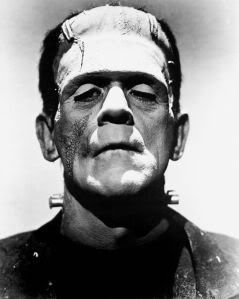
And I couldn’t blame you. That’s Boris Karloff in the original film. The fact that he is what you picture just goes to show you how iconic Karloff’s portrayal was. But here’s the thing you might not have known. That’s not Frankenstein. Frankenstein is actually the name of the doctor, the scientist that created the monster that most people associate with the name. The creature itself is usually just called “the monster,” or something along those lines.
Why is it like that? Let’s look at the movies of the 20s and 30s. Monster movies were pretty big back then, and the movie is pretty much what made Frankenstein what it is today. The horror movies during that era were similar. A strange creature that terrorizes people for whatever reason. The movies themselves were usually named after the creature. The Hunchback of Notre Dame, for example, or Dracula. This wasn’t the case with Frankenstein. While the movie is named after doctor, the monster is the main selling point, which was quite different from other films of the time which told you exactly what you were getting right in the title.
There wasn’t much in the way of confusion, either. Everybody knows what a Phantom (as in, of the Opera) is. Everybody knows what a Mummy is, and what a Wolfman is. They’re all pretty self-explanatory terms. But a Frankenstein? What the heck does that mean? It’s actually a German surname, but how is the average American movie-goer looking for a cheap thrill supposed to make that connection, especially if they haven’t actually seen the film? So when people were used to seeing things like this:
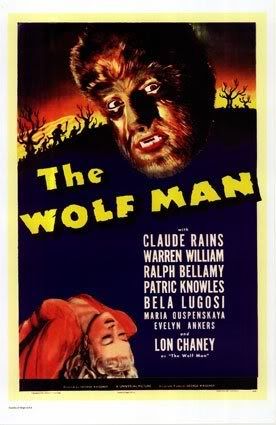
and this:

Then see this:
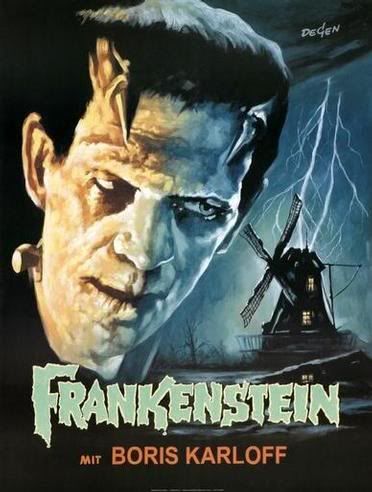
It’s easy to see how the misconception came about.
The name is far from the only incorrect idea, however. A lot more lore has sprang forth from the old celluloid that had nothing to do with the pre-1931 story. Quite a bit. In fact, there are more differences between the movie and novel. I understand that at this point the movie is about eighty years old and a lot of people probably haven’t even seen that. Heck, I haven’t even seen it myself. What I do know about it comes from reading up on it and seeing documentaries about it. So before I go on, here’s a quick outline of what happened in the original film, and thus has grown to become the story of Frankenstein that we most know today.
The film begins in the laboratory of the mad scientist Doctor Frankenstein. He, along with his hunchback assistant Fritz (not “Igor,” as most people would thing) are creating a humanoid monster. The creature is made by the parts of the bodies of the recently deceased, sewn together to create one mixed-up, mashed-up monster. As they put it together, zap it with electricity, and scream, “it’s alive!” You know the drill.
The monster is successfully brought to life, but the brain used was defective and the monster is incapable of little beyond basic human instinct. In short, it’s as dumb as a box of rocks. So Fritz locks it in the basement and starts torturing it. This doesn’t last long, as the monster breaks loose and strangles his attacker, then escapes the castle.
As the monster roams the countryside, it comes across a young girl throwing flowers in a pond and watching them float. She sees the creature and offers it friendship, and shows it how to do what she’s doing. The monster likes that he’s found a friend and enjoys the flowers, but they soon run out. With no flowers, the creature picks up the little girl and throws her into the water, where she drowns. This isn’t an act of malice, so much as ignorance of the world around it. Like I said, the monster is a few bricks short of a full load, not to mention that it’s been alive for less than twenty-four hours.
Meanwhile, the doctor finds that the creature strangled his assistant. Frankenstein is a little miffed, so he goes to town, where he finds that the townspeople are also pretty ticked that the monster killed the little girl. Frankenstein rallies a mob and the storm the countryside, eventually tracking the monster to an old building. Frankenstein gets into a fist fight with the creature and is wounded but survives, and the townspeople set fire the building, presumably killing the creature.
A really interesting story, no? Well thought out, and very unique. In spite of the monster movie schlock, there’s actually an incredibly intelligent story behind it. We really could make a detailed analysis of the monster and its behavior. The monster isn’t even evil. It’s probably the most innocent creature in the film. The killings come from misunderstanding, and it’s hard to hold it against something that was just born yesterday.
It kind of reminds me of a scene from the novel A Hitchhiker’s Guide to the Galaxy by Douglas Adams, in which an extremely unlikely chain of events causes a whale to pop into existence several miles above the surface of a planet. It lives, thinks, then splats to the ground. That’s sort of the same thing that happens to the monster in the movie. It didn’t want to be made. It wasn’t even born, it didn’t have the chance to learn or grow. One minute it wasn’t, and the next, it just was. As a result, the monster can’t really be held responsible for its actions in the film.
Of course, in the original novel, the monster isn’t quite so innocent. And that’s not the only difference, either.
For starters, the doctor that created Victor Frankenstein (Henry in the film) isn’t really a mad scientist. He’s actually a brilliant college student, and a quite sane one at that (well, as sane as anyone building a human replica can be.) There is no hunchback assistant. He actually has a family and friends. The monster is quite different as well. The first major difference is his actual creation. In the film it’s a bunch of body parts sewn together and shocked back to life. In the novel, it’s much more ambiguous. We’re never really told exactly what happened. The monster could be robot for all we know.
While the monster in the novel starts out as young and dull-minded as the one in the film, it eventually develops more advanced intelligence. By the second major encounter, it’s not only able to speak, but feel intense human emotion and hold a conversation just like any other man. As a result, it’s actions are deliberate, making him far more evil than the just-plain-dumb movie version. Just the fact that he is even able to develop intelligence points to another difference: the film takes place over the course of a few hours, while the novel spans several months, maybe even years.
All of these points are rendered pretty much redundant when you take a look at the biggest difference: the plot itself. As I said, the similarities between the Frankenstein archetype and the original story are scant. So since I’ve been stroking the novel’s ego up and down this whole time, by this point you’re probably wondering, “so, Adam, how exactly DOES the original story go, anyway?” I’m glad you asked, because I’m going to tell you.
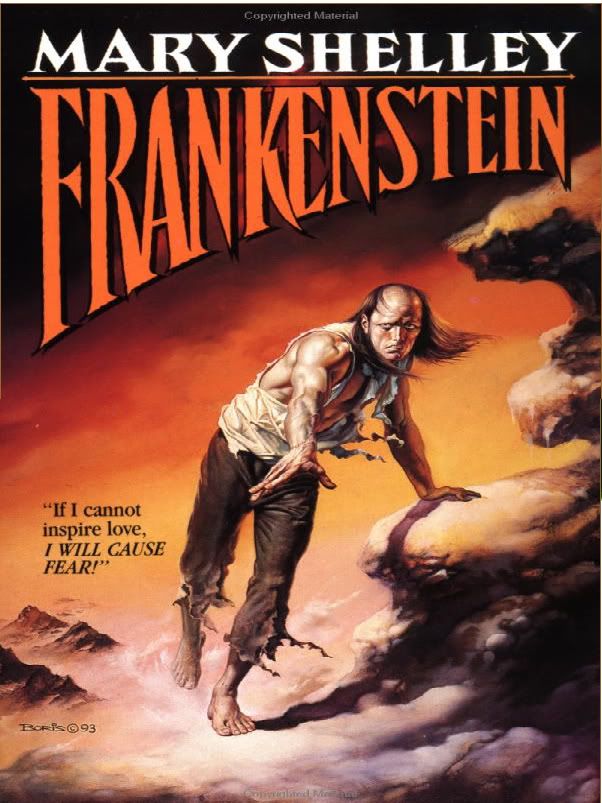
The Original Story of Frankenstein
Our tale actually begins on a ship sailing through the northern tundra. As the vessel enters the frigid area, their ship becomes ice locked and they can’t go any further. Stranded, the crew tries to break themselves free, and even does a little exploring. It is during one of these expeditions that they come across the body of a man in the ice. They take him back to the ship and attempt to nurse him back to health, where they at least manage to get him conscious enough to find out what happened. This is where bulk of the story is told, as a flashback by man on his deathbed.
The man is one Victor Frankenstein. He was born into a well-to-do family in Germany during a period of great scientific discovery. He grows up as a normal boy, playing with his friends, and falling in love with his cousin, Elizabeth. He does have one noticeable tweak: an uncanny fascination with both science, and life and death.
When Victor comes of age, he goes off the study at a prestigious university, which serves to fuel his fascination even more. He begins working on building a human being to give life to. As the weeks pass, he becomes so obsessed that he gets sick, but continues anyway. Eventually, he creates the monster and, through unspecified means, actually brings the creature to life.
It doesn’t take long for Victor to regret the decision. He literally scares himself with his own creation and runs scared from the dorm. He stays away for a long time to clear his head. When he eventually works up the nerve to go back and face the creature, he finds that it has escaped and is nowhere to be seen. Victor puts the ordeal out of mind, vows never to do it again, and sets about a new task of nursing himself back to health.
Some time after the incident, Victor gets news of some family troubles back home, including the death of his younger brother. He returns to his family to encounter a string of extremely unfortunate events among his relatives. Victor deduces that it is the monster’s doing, seeking revenge on him, so he leaves his home to hide in the mountains in an attempt to draw the creature away from his family.
His hunch turns out to be correct. The monster, which has learned to speak, confronts Victor in the mountains. It tells Victor how it wandered the countryside after leaving the dorm until it came across a secluded cottage in the woods. It took up shelter nearby and observed the family who lived there for several months. In the process, it learned to speak and read, and feel emotions. It also began to hold a grudge against Victor, for creating it, creating it as a monster, and then abandoning it. After the monster came out of the hiding, it scared the people in the cottage, prompting the monster to decide to get it’s revenge.
Instead of killing Victor, it takes him to a remote island and forces him to build another monster, so that it can have a companion. Victor initially complies, both out of fear as well as a new found sense of responsibility. He builds the second monster. However, just before giving it life, he realizes that he doesn’t want to be responsible for bringing another such creature into the world. He destroys the second monster and returns to the island.
The first monster, which is now absolutely pissed, goes on a rampage and beings killing more of Victor’s friends and family (and even frames Victor himself for one of them, although he is acquitted of the charges.) Victor decides that the only way to fully rectify the situation is to confront the monster and kill it. He returns home and marries his Elizabeth in order to experience some happiness before his potential death. After the wedding, he gears up and gets ready to fight the creature.
Unfortunately for Victor, the monster isn’t so honorable. Instead of fighting Victory, it breaks into his house and confronts Elizabeth. Victor is unable to get there in time to save her and the monster kills her as well. In the days following, Victor’s father is stricken with grief and dies from depression after the loss of so many loved ones. Victor is now the only remaining member of his family alive, and takes his own vow of revenge. With nothing left to lose, Victor decides to hunt down and kill the monster. The ensues is a thinly-described wild goose chase between the two of them across the country, eventually leading to the arctic, where Victor was found by the crew of the stranded ship at the beginning of the novel.
Victor finishes telling his story to the ship’s captain. Having confessed his tale to somebody, he has no reason to continue fighting the losing battle against the hypothermia he has and let’s himself die. After being stranded in the ice for a long time, the ship’s crew decide to head for home.On the night before their departure, the captain enters his bedchamber and is surprised to find the monster standing over Victor’s dead body. The monster expresses remorse, admitting that the events were just as much his fault as they were Victor’s, and that he actually felt attachment to Victor, being the only person he ever really had a connection with. He thanks the captain for making Victor comfortable on his death bed, then vows to leave into the arctic snow, where nobody will ever see or hear him again.
That’s a pretty big difference between the two stories, eh? Both are extremely intelligent and well put together, with both interesting characters and a sizzling plot. When you really look at the novel, it’s one heck of a good story. Easy to see why it lasted so long, and eventually gave way to the film, which, in turn, became such grand segment of Halloween/horror fiction.
I’m not even sure why the tale of Frankenstein is so appealing. Maybe it’s because it really is true horror. If you strip away the meat from either story, it eventually boils down to a crazy scientist playing God and giving life to something that was never meant to be. Just that concept alone is pretty freaking scary. You can dress it up any way you want. It’s pretty hard to take the horror out of the Frankenstein story.
That’s another thing that makes it stand out. Frankenstein, today, is still a horror story. For one thing, it’s an intelligent story, and scary without blood or gore or things yelling boo, unlike any kind of fiction put out these days. It also hasn’t strayed from what it is. Of all of the classic ghosts and monsters that ran prominent during the golden age of cinema, Frankenstein is really the only one that hasn’t morphed into a grotesque shadow of its former self. The Wolfman is getting a remake next year, which will probable be an over-glorified bastardization of the original. Everything else has already changed so much as to be barely recognizable compared to their original counterparts.
The Hunchback of Notre Dame is a Disney cartoon:
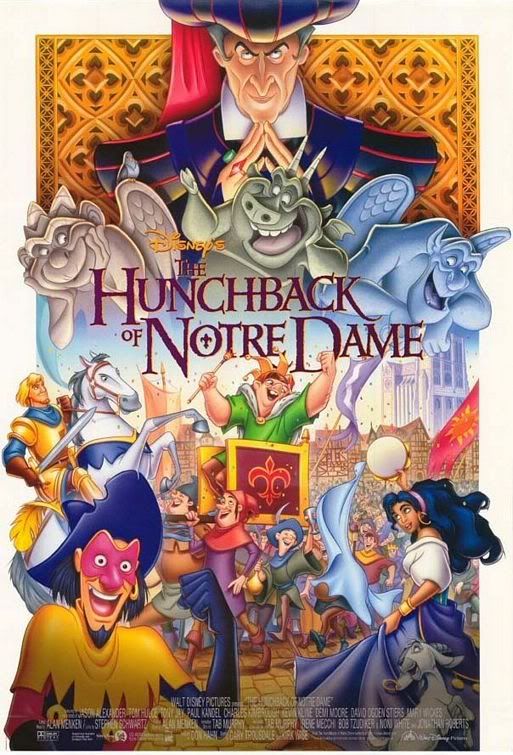
The Phantom of the Opera is a romantic musical:
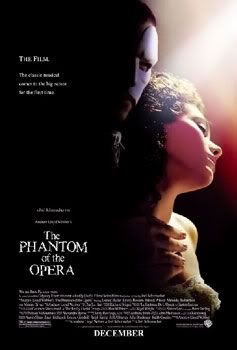
The Mummy is an Indiana Jones-style adventure:

And don’t even get me started on vampires. Nowadays, they’re more like superheroes:

Or worse:
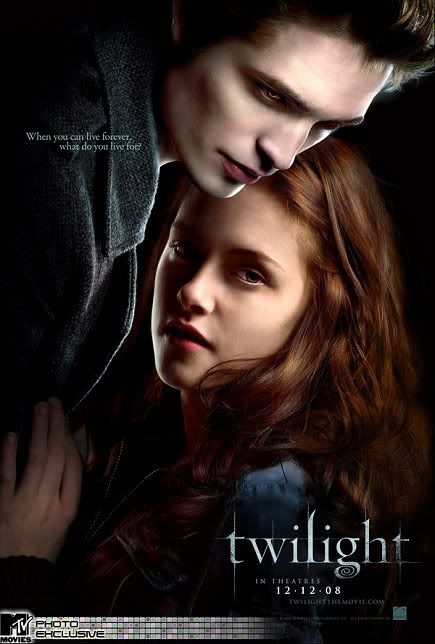 No. Just, no.
No. Just, no.Frankenstein is still Frankenstein. I guess you could argue that Frankenstein went through it’s transformation far earlier, that being the movie itself. I suppose that could be right, but at least it didn’t change what is at it’s core.
Frankenstein is an icon of horror, and rightfully so. Its paid its dues and earned its place as one of the most recognizable symbols of Halloween.
So anyway, I hope you found this entertaining and informative. Tonight, whether you’re partying, trick-or-treating, or scaring yourself with old movies. Or maybe you don’t even celebrate Halloween, that’s cool too. Either way, thank you for reading. God bless you and have good night.

*I’ve never heard of him either.
**I don’t think this is a real word, but it sounds like one, doesn’t it? And it gets to point across. Maybe I should submit that to Webster’s.
No comments:
Post a Comment